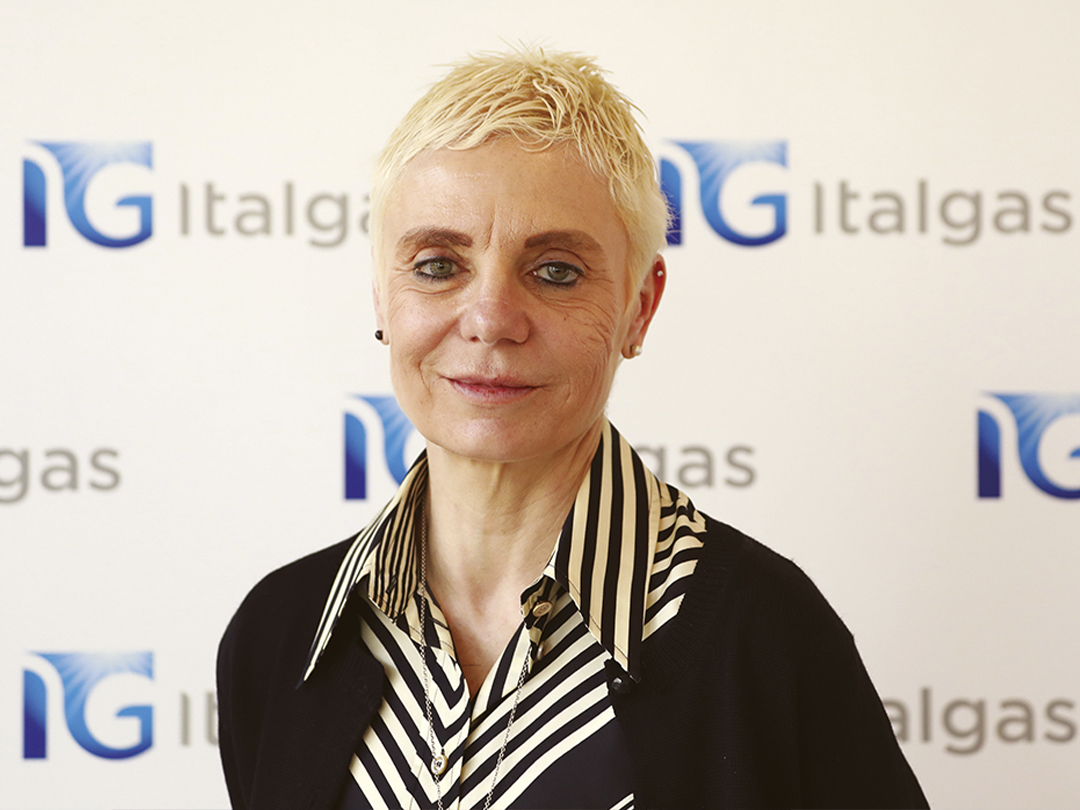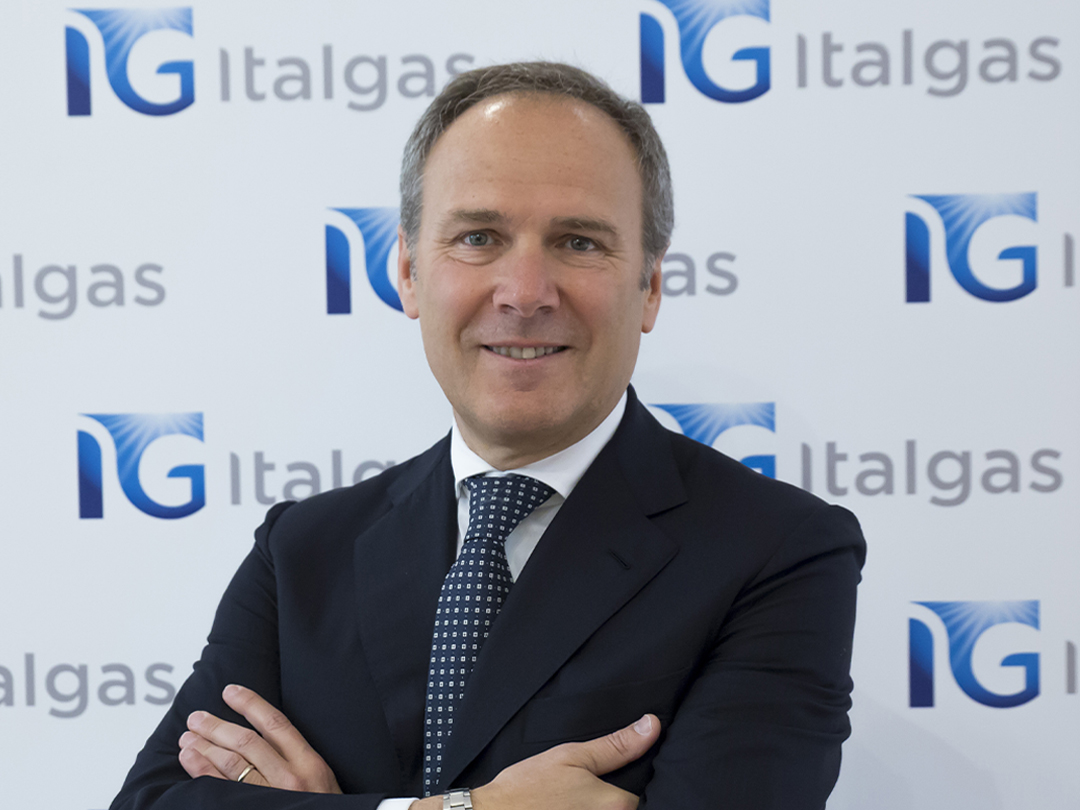Dear Shareholders and Stakeholders, In an energy scenario characterised by a process of profound transformation, gas distributors play a crucial role in achieving the objectives of energy security, diversification of supply and decarbonisation of consumption.
A role that, in the aftermath of the outbreak of war on Europe’s doorstep, was even more specifically defined by the REPowerEU.
The European Commission document, in fact, in indicating biomethane and hydrogen as sources intended to contribute to the replacement of about 50% of the gas that the EU imported from Russia (155 billion cubic metres in 2021), emphasised the extraordinary role of gas distribution networks both as a carrier of these renewable gases and as a stimulus to their production. This is a logical choice, since we can count on an extremely capillary network that in Europe stretches for about two million kilometres and which, suitably transformed, is capable of favouring the progressive replacement of gas of fossil origin and the achievement of the net-zero economy.
In the changed scenario, the characteristic of capillarity makes these networks not only a driver for distribution, but also and above all a driver for gas collection: a biomethane plant is much more likely to be located close to a distribution network than a transmission network, and feeding it into the grid is also easier due to lower operating pressures.
As Italgas has demonstrated in recent years, working with foresight and vision on the digital transformation of assets and processes, the starting assumption is that digitisation must necessarily precede the energy transition. It is an infrastructural issue: preparing the assets to accommodate and manage multiple commodities at the same time, to recognise in real time the types of gas that are being distributed, thus the amount of energy, to assess the correct network set-up at a given time, and so on.
Already today, it is not only gas of fossil origin that flows through our networks. There is also biomethane produced from the wet fraction of waste and agricultural residues; and in the near future it will also be the turn of hydrogen and synthetic methane. Consequently, the infrastructure must be smart, “alive”, flexible and able to react to conditions that are not and will no longer be standard conditions, precisely because of the arrival of different gases. Italgas has been working on this since 2017, accompanying and supporting this transformation with upskilling and reskilling activities to enable its people to manage and anticipate change. A path that by the end of 2023 will lead us to provide the country with an almost entirely digitised network, ready to accommodate renewable gases and thus contribute to the achievement of climate targets.
In this context, biomethane is crucial for encouraging the ecological transition of Italy and Europe.
The potential is such that several studies agree that the amount of biomethane that Italy could produce by building new plants and upgrading existing biogas plants, which cannot be injected into the network due to its composition, is around 8 billion cubic metres. 8 billion cubic metres corresponds to more than 10% of the country’s current needs, roughly the amount that TAP from Azerbaijan or twice as much as GreenStream from Libya brings to Italy today.
At the European level, the calculations are even more significant: the EU Commission estimates a potential annual production of between 25 and 30% of the European Union’s current gas consumption. We need only consider that, from 2018 to 2021, installations in Europe almost tripled to 1,023 in nineteen countries, and it is not a coincidence that most of them are connected to distribution networks.
In Italy, there are 54 biomethane plants with a capacity of 479 million cubic metres per year, still far from Italy’s potential and that of other countries that are further advanced in the development of the sector, such as France (with 365 plants and 620 million cubic metres produced) and Germany (242 and 1.2 billion cubic metres). The growth margins are extensive, especially in Southern Italy, where, by virtue of its agricultural tradition, estimates point to a production capacity of 2-3 billion cubic metres to be developed by 2030.
Italgas is playing its part with more than € 100 million of investments aimed at facilitating the connection of biomethane production plants to the distribution network and establishing reverse flow technology towards the transmission network, so as to enable the acceptance of quantities that are not consumed locally.
However, there is one fact that needs to be reflected upon: today, in Italy, most of the connection charges fall on the biomethane producer while only 20% are borne by the system. In other EU countries, this relationship is often the opposite, and this has been an important development factor.
On both fronts – reverse flow and connection costs – in line with the objectives set by REPowerEU, it would be desirable for the European legislator and the national regulator to intervene in order to define a framework of rules to promote their effective development, drawing also on the use of NRRP funds, which is something that has a relatively short-time horizon.
As for green hydrogen, our forecast is that its era will not begin for five to seven years: the conditions must be created for its cost to be competitive with other sources. And for this to happen, a large surplus of energy from renewable sources and a lower cost of electrolysis than at present would be required.
In the meantime, however, numerous experiments are underway by industry players, and Italgas is also working to be ready. In Sardinia, we are implementing a pilot project based on Power-To-Gas (P2G) technology for the production of green hydrogen. The project is in partnership with important research institutions such as the Polytechnic University of Turin and the CRS4 Research Centre of the Sardinia Region, and is in the final stages with regard to the administrative authorisations that need to be obtained.
The choice of this island is not accidental: in the only region that did not experience the benefits of methane until 2020, Italgas has created a network of “digital native” networks – the most advanced in the country – that has allowed it to overcome the natural gas challenge within two years and to attract new operators in the sector, reactivating an important economic domain. An energy system, dubbed the “Sardinia model”, based on state-of-the-art networks and cryogenic deposits of liquefied natural gas (“small scale LNG”) that made it possible to overcome the shortage of pipeline connectivity. A model that, thanks to P2G technology, can also highlight the contribution of sector coupling to decarbonisation, energy diversification and security.
This solution can be adopted in all those areas where traditional supply is complex or uneconomical, such as in some areas of Greece, where Italgas completed the acquisition of 100% of DEPA Infrastructure as well as its distribution companies EDA Thess, EDA Attikis and DEDA in 2022. A process of sharing technical and technological know-how has already begun with them, in support of the common goal of building an infrastructure of excellence that will contribute to achieving the coal and lignite phase-out targets set by the Greek government in line with EU targets.
It is precisely this capacity for technological innovation, which has made Italgas a global benchmark, that has enabled the company’s daily operations and process management to become digitally transformed in recent years, starting with network control and gas leakage prevention activities. In this area, the definitive adoption of Picarro technology, the most cutting-edge in the world in the field of preventive network monitoring, has brought about a Copernican revolution in the control of fugitive methane emissions, to the point of reducing leakage from Italgas networks to less than 0.1%.
Innovation is also at the heart of the Group’s presence in the energy efficiency sector, where it offers advanced solutions and products that guarantee systematic energy savings. Those same solutions that are proposed to the market have already been applied in our operations and have enabled us to achieve savings of more than 20% in energy consumption over the past year, in both electricity and gas.
Together with technological innovation, decarbonisation, the circular economy, the sustainability of its supply chain, safety of assets, training, diversity and inclusion are also strategic drivers through which Italgas intends to implement the 2022-2028 Sustainable Value Creation Plan, approved last 14 December by the Italgas’ Board of Directors, which is part of the trajectory of the € 8.6 billion investment Strategic Plan. A Plan that has defined three directions - Planet, People and Partnership (for a sustainable future together)- corresponding to lines of action with clear commitments, measurable targets and expected medium- and long-term results.
Thanks to adjusted revenues of € 1,537.3 million (€ 1,555.9 million in the reported configuration) and an adjusted net profit attributable to the Group of € 395.7 million (€ 407.3 million in the reported configuration), the Group’s growth trend, which has been constant and uninterrupted since its return to the Stock Exchange in 2016, was also confirmed in 2022. These are results achieved thanks to the contribution of all Italgas people, who have combined change, innovation and improvement, and which allow us to propose the distribution of a dividend of 0.317, an increase of +7.5% compared to 2022, to the satisfaction of our Shareholders.
Pioneers by passion and builders by calling, we bring all our energy to accelerate the ecological transition.
We do it for us.
We do it for everyone.



